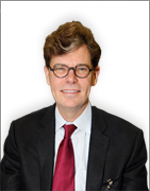Interview with the Author
 Richard M. DeMay, MD, is professor, Department of Pathology, and Director of the Division of Cytopathology at The University of Chicago Medical Center. He is also author of Practical Principles of Cytopathology and The Pap Test.
Richard M. DeMay, MD, is professor, Department of Pathology, and Director of the Division of Cytopathology at The University of Chicago Medical Center. He is also author of Practical Principles of Cytopathology and The Pap Test.
This is a monumental work. When did you decide to take the plunge and bring Art & Science up to date?
Actually, I put off updating Art & Science because I knew it would, in fact, be a monumental task. In the meantime, I wrote two other books (Practical Principles of Cytopathology and The Pap Test). Nevertheless, clearly, a lot has happened in the last 15 years or so and an update was overdue.
Even though it was a monumental task, this book was also a labor of love. Anyone familiar with Mihaly Csikzentmilayi's concept of "flow" will relate to the feeling I had when I was writing—"in the zone," completely involved, oblivious to time.
How does it differ from other books in the field?
Bigger…and better. It's primarily single-authored (with only three other contributed chapters) and it contains an encyclopedic reference, concise summaries, and synoptic atlases, providing the reader with essentially three books in one. There are some 1,000 summary lists and tables, 7,000 images (more than twice as many as any of its competitors), and 25,000 references. There is also a very high standard for the quality of the images.
What do you think are the most important advances in the field represented in the new edition?
Although certain core aspects of cytopathology remain stable, much has changed. There are new diagnostic tests, new classification systems, new management guidelines, as well as newly described entities and new names for old entities.
Where do all the images come from?
I've been very fortunate in that regard. I've had access to rich diagnostic material over a period of some 30 years from five major medical centers. Joshua Weikersheimer at ASCP Press and I culled through tens of thousands of images to select the best ones for publication.
It seems that it's important to you to be entertaining in your presentation. Why is that?
Many scientific textbooks are dry as dust. A little humor not only helps the reader keep reading, but also helps the reader remember what was read.
How do you envision the ways in which purchasers will use the book?
The audience for the book is very broad, ranging from beginning cytotechnology students to highly experienced, board-certified cytopathologists. Students and residents encountering cytopathology for the first time may want to stick to the basic topics, at least at first. They'll be helped by the many summary lists and tables.
For the more advanced reader, there are more advanced discussions, which include not only rare entities, but also rare presentations of common entities. Anyone who wishes to review cytopathology—for a board exam, perhaps—should find the synoptic atlases at the end of each diagnostic chapter quite helpful.
I also hope the book will be used routinely to help solve daily diagnostic dilemmas—by not only saying what the differential diagnosis is, but also how to get to the definitive diagnosis.
What made you decide to include Henry Li's brushwork in the volumes?
I had the honor of Dr. Li personally showing me his laboratory in China, where I saw large versions of these images. I was thrilled that someone had admired my images enough to make them into true works of art and I wanted to share some of them with the readers of Art & Science.
Can you remember when you decided to make cytopathology your life's work?
I am a fourth-generation physician, so it was more or less "in my DNA" to become a doctor. My Uncle Hal was a pathologist and I kind of liked the laboratory. Then, while I was still a medical student, I encountered Dr. Denise DeFrias, who was—and still is—a very enthusiastic teacher and who first got me interested in cytopathology. Next, I did a fellowship with William "Jack" Frable in Virginia, who was one of the pioneers of FNA biopsy in this country.
With all the advances in recent years, what's your vision of the future of the field?
There has been, and will continue to be, an emphasis on doing more and more with less and less. Cytopathology is the perfect answer to the question of how to do that. Personalized medicine and molecular diagnostics will certainly be important. Cytopathology is also perfect for integrating morphology and molecular diagnostics.


